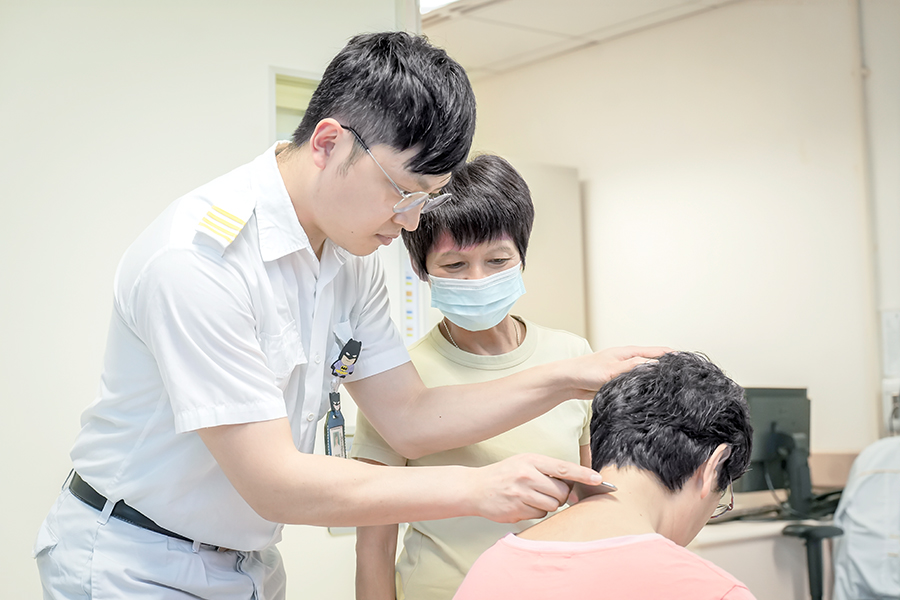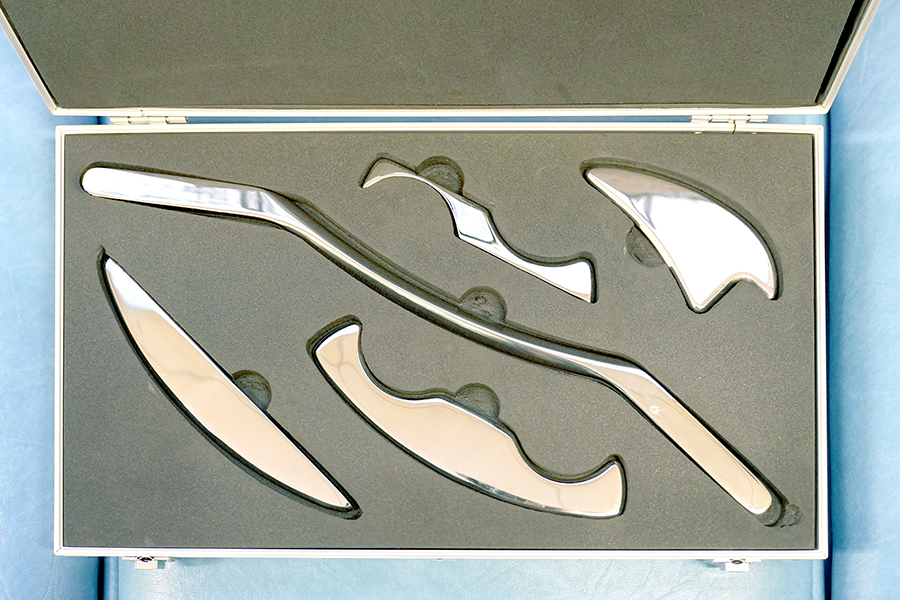Lessons in a cutting-edge treatment for muscle pain
 “My wife suffered from low back pain. She had tried several therapies but she found they were not working for her. I had read about the fascia blade on the internet and heard it was quite effective, so I immediately signed up when a colleague organised a workshop,” says Tin Shui Wai Hospital Advanced Practice Prosthetist and Orthotist Szeto On. He attended the fascial blading workshop with colleagues after work.
“My wife suffered from low back pain. She had tried several therapies but she found they were not working for her. I had read about the fascia blade on the internet and heard it was quite effective, so I immediately signed up when a colleague organised a workshop,” says Tin Shui Wai Hospital Advanced Practice Prosthetist and Orthotist Szeto On. He attended the fascial blading workshop with colleagues after work.
Fascial blading involves using a handheld blade to relax the fascia – the tissue that can become inflamed and painful because of overuse or damage of muscle. The process breaks down scar tissue and allows for the repair and regeneration of soft tissue.
The workshop was led by Advanced Practice Physiotherapist Jackie Kwan who taught participants how to use different sizes and models of fascia blade for different muscle groups and body areas. “Scraping back and forth at an angle of 30 to 45 degrees for about three to five minutes can ease pain, especially for colleagues who sit and stand for long periods,” he explains. “The blade is easy to use and the procedure can be done anywhere, so it is no surprise colleagues were keen to learn more about it.”
 Using a fascia blade also increases blood flow, removes metabolic waste, and improves the metabolic process, but users must be careful not to inadvertently cause injury, Jackie cautions. “Some people think that red or purple bruises have to be seen on skin for the therapy to be effective like the Chinese gua sha treatment, but this is not the case,” he says. “The fascia blade itself has a weight and a few minutes of gentle scraping will relax the fascia, so do not apply too much force and do not scrape to the point where the skin is damaged.”
Using a fascia blade also increases blood flow, removes metabolic waste, and improves the metabolic process, but users must be careful not to inadvertently cause injury, Jackie cautions. “Some people think that red or purple bruises have to be seen on skin for the therapy to be effective like the Chinese gua sha treatment, but this is not the case,” he says. “The fascia blade itself has a weight and a few minutes of gentle scraping will relax the fascia, so do not apply too much force and do not scrape to the point where the skin is damaged.”
Jackie took other courses about the Anatomy Trains In Motion to broaden his knowledge before hosting the workshop. “The courses helped me teach the use of the fascia blade in a more dynamic way, and it was very satisfying to see my colleagues’ smiling faces while relaxing their muscles,” he reflects. “They also raised different questions in the classroom so that I could see real-life cases which is a great way to learn.” After the workshop, Szeto On was delighted with his newly-acquired skills. “I hope fascial blading will relieve my wife’s back discomfort so that we can go to more places and travel together more in future,” he says with a smile.
